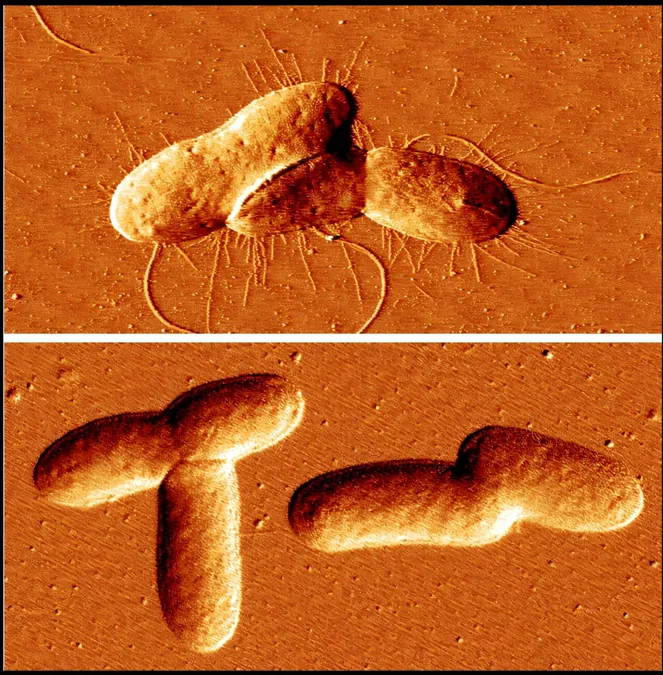
Revolutionary Plant Molecule Could Be the Key to Eradicating Harmful Bacterial Biofilms!
2025-01-11
Author: Mei
Introduction
Have you ever wondered why your teeth feel fuzzy when you skip brushing? That’s biofilm, a slimy layer of bacteria that forms on various surfaces, and it's not just a dental dilemma—these microorganisms also pose significant challenges in medical settings. Biofilms create impenetrable shields around bacteria, making infections harder to treat, especially when they grow on critical devices like catheters and implants.
Groundbreaking Discovery at UC Riverside
Researchers at UC Riverside have made a groundbreaking discovery that could change the game: a molecule derived from stressed plants could halt biofilm formation. This newly identified compound presents exciting prospects not just for improved healthcare, but also for reducing equipment corrosion in various industrial applications.
Dr. Katayoon Dehesh, a distinguished molecular biochemistry professor at UCR, explains, “Biofilms are essentially communities of microorganisms that stick together, forming protective layers on surfaces. You can see biofilms in nature as the slimy coatings on river rocks, or in your mouth as plaque on teeth. While they are natural occurrences, biofilms can wreak havoc in both medical and industrial contexts.”
The Role of MEcPP
The study, recently published in Nature Communications, emphasizes the importance of a specific plant metabolite called MEcPP. This molecule is produced during essential chemical reactions within plants and can significantly impact not only plant health but also bacterial behavior. When a plant is stressed—like when it's damaged or exposed to excess oxygen—it accumulates MEcPP, triggering protective mechanisms. Surprisingly, this same metabolite can thwart bacteria such as E. coli by hindering their ability to adhere to surfaces.
Impact on Medical and Industrial Settings
In medical environments, biofilms on devices such as stents and implants complicate infection control, as the bacteria within these biofilms exhibit a high resistance to antibiotics. In industrial sectors, biofilms lead to numerous issues, from clogged pipes to contaminated food processing equipment.
“We are excited about the potential of this molecule to improve cleanliness and safety in various industries,” stated Dehesh.
Mechanism of Biofilm Formation
The key to biofilm formation lies in structures called fimbriae, which bacteria use to anchor themselves to surfaces. This initial attachment is crucial for biofilm development. Without fimbriae, bacteria cannot establish their 'fortresses,' making them vulnerable to treatment. By targeting this early attachment phase, MEcPP effectively disarms bacteria, preventing them from forming biofilms.
Research Findings
To further understand the mechanism, researchers screened over 9,000 bacterial mutants and identified a pivotal gene called fimE, which acts as an “off switch” for fimbriae production. MEcPP boosts the activity of this gene, thereby reducing fimbriae expression and stunting biofilm formation.
“This discovery could pave the way for innovative strategies to combat biofilms across numerous industries,” said Jingzhe Guo, a UCR project scientist and the paper’s lead author. “From more effective dental care products to cleaner water systems, the potential applications are vast.”
Economic Implications
Beyond medical concerns, biofilms represent a significant economic challenge in industry. They can lead to blocked pipelines, rusting machinery, and increased contamination risks in food processing. Current strategies for managing biofilms heavily rely on harsh chemicals or costly treatments, not to mention the environmental consequences of using such methods.
Guo added, “Our study underscores the fascinating links between plant biology and microbiology. It's exciting to think that a molecule meant for signaling plant stress could offer new tools for humans to combat bacterial threats.”
Conclusion
This revolutionary discovery heralds a future where biofilm-related issues may become a thing of the past, making way for healthier living environments and more reliable industrial processes. Stay tuned as scientists continue to unlock the potential of this plant-derived molecule!



 Brasil (PT)
Brasil (PT)
 Canada (EN)
Canada (EN)
 Chile (ES)
Chile (ES)
 Česko (CS)
Česko (CS)
 대한민국 (KO)
대한민국 (KO)
 España (ES)
España (ES)
 France (FR)
France (FR)
 Hong Kong (EN)
Hong Kong (EN)
 Italia (IT)
Italia (IT)
 日本 (JA)
日本 (JA)
 Magyarország (HU)
Magyarország (HU)
 Norge (NO)
Norge (NO)
 Polska (PL)
Polska (PL)
 Schweiz (DE)
Schweiz (DE)
 Singapore (EN)
Singapore (EN)
 Sverige (SV)
Sverige (SV)
 Suomi (FI)
Suomi (FI)
 Türkiye (TR)
Türkiye (TR)
 الإمارات العربية المتحدة (AR)
الإمارات العربية المتحدة (AR)